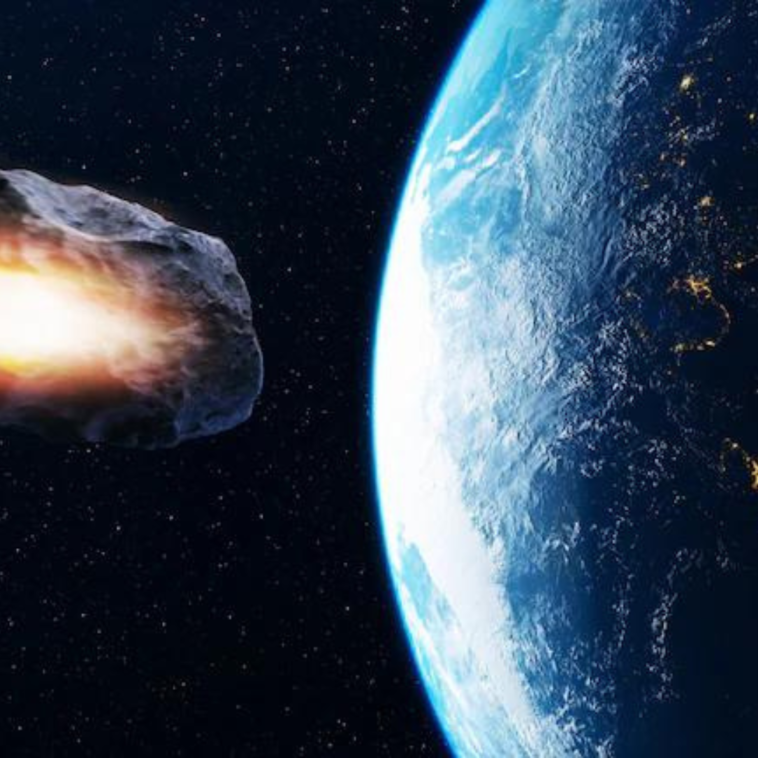On August 1, 2024, NASA’s Jet Propulsion Laboratory has alerted the world about two substantial asteroids, 2024 OE and 2024 OO, approaching Earth. These space rocks, while not posing any immediate threat, are of great interest to scientists and researchers.
Their passage provides a unique opportunity for tracking and observation that can enhance our understanding of these celestial objects and their behavior.
Asteroids 2024 OE and 2024 OO
Asteroids 2024 OE and 2024 OO are notable for their size. The former measures approximately 190 feet in diameter, while the latter is about 88 feet across. Despite their impressive sizes, their orbits will ensure they pass Earth at a safe distance. This event is particularly significant as it marks the second occurrence in less than a month where large asteroids have been closely monitored.
Previously, in July, two other asteroids were tracked, with one having a small moon and the other being discovered only days before its closest approach.
Scientific Significance
The close passage of these asteroids offers invaluable data for scientists. Observing and studying these objects allow researchers to gather detailed information about their composition, size, and surface characteristics. Such data is critical for understanding the origins of asteroids and their role in the early solar system.
For example, analyzing the rotation and surface features of these asteroids helps scientists infer their internal structure and the processes that shaped them.
What Are Asteroids?
Asteroids are small, rocky bodies that orbit the Sun, remnants from the early solar system. Formed over 4 billion years ago, these objects are sometimes referred to as minor planets. They predominantly reside in the asteroid belt between Mars and Jupiter, although some follow orbits that bring them closer to Earth.
The largest asteroid, Vesta, has a diameter of about 530 kilometers, while the smallest can be less than 33 feet across. Collectively, asteroids have a mass that is significantly less than that of the Moon, but they are crucial for studying the early solar system.
Near-Earth Objects (NEOs)
Asteroids that approach Earth’s orbit are classified as Near-Earth Objects (NEOs). These include both asteroids and comets with orbits that bring them close to our planet. Monitoring NEOs is essential for assessing potential impact risks and understanding their behavior.
Currently, NASA and other space agencies closely track these objects to predict their trajectories and ensure that any potential threats are identified well in advance.
Shapes and Types of Asteroids
Asteroids vary widely in shape and composition. While some are almost spherical, many are irregular, with craters or pits. Some asteroids even have their own moons. Based on their composition, asteroids are categorized into several types:
– C-type (Carbonaceous): These are the most common and contain clay and silicate rocks. They are considered some of the oldest objects in the solar system.
– S-type (Silicaceous): These are composed of silicate minerals and nickel-iron.
– M-type (Metallic): These are primarily composed of metal, including iron and nickel.
Each type provides insight into the conditions of the early solar system and helps scientists understand the formation and evolution of these objects.
Importance of Asteroids
Asteroids are more than just space rocks; they are key to understanding the origins of our solar system. They serve as time capsules, preserving information from the early days of the solar system. Missions such as NASA’s OSIRIS-REx, which collected samples from the asteroid Bennu, have been instrumental in providing insights into the chemical and physical properties of these objects.
The samples from Bennu, for instance, are expected to offer crucial information about the early solar system’s conditions and the formation of planets.
Potential for Destruction
The potential for an asteroid to cause destruction depends on its size. Large asteroids could indeed have catastrophic impacts, but current observations suggest that there are no imminent threats. For instance, an asteroid would need to be at least 16 feet in diameter to reach Earth’s surface and cause significant damage. Most small meteors burn up in the atmosphere and pose no threat. Additionally, larger asteroids that could potentially impact Earth are closely monitored. Statistically, the likelihood of an asteroid causing significant harm is low, and most impacts are expected to occur in uninhabited areas or the ocean.
Ongoing Monitoring and Future Prospects
The monitoring of asteroids is an ongoing effort involving numerous space agencies and research institutions worldwide. Advancements in technology and observational techniques continue to enhance our ability to track and study these objects. Future missions and research are expected to provide even more detailed information about asteroids, contributing to our understanding of their role in the solar system and improving our planetary defense strategies.
The close flyby of asteroids 2024 OE and 2024 OO underscores the importance of continuous asteroid monitoring and research. By studying these objects, scientists gain valuable insights into their origins and behavior, enhancing our knowledge of the early solar system. As these asteroids pass safely by Earth, their study reinforces the importance of planetary defense and the ongoing quest to understand the cosmos.




GIPHY App Key not set. Please check settings